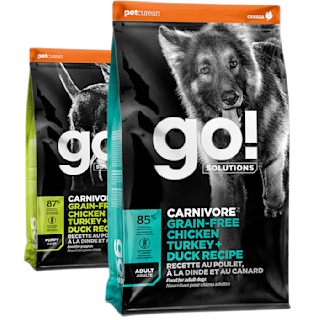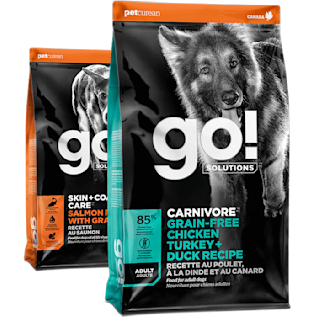June 18, 2025
What Is Meat Meal in Dog Food?

You may have noticed when reading the back of the packaging of your dog’s food that one of the first ingredients on the list is a meat meal. These can be seen as chicken meal, salmon meal, or turkey meal for example.
Now you might be wondering, what’s the difference between fresh meat and a meat meal? Well, fresh meat includes muscle meat and naturally present amounts of accompanying fat. Meat meals, on the other hand, are a concentrated source of protein and essential amino acids.
What Is Meat Meal in Dog Food?
Meat meals are created by using fresh meat and nutrient-rich bones and cartilage. Using a cooking process called rendering, the meat is converted into a protein-rich, dry ingredient.
Examples of meat meals include:
- Duck Meal
- Chicken Meal
- Lamb Meal
- Turkey Meal
- Salmon Meal
- Venison Meal
Really, you can make a meat meal out of almost any animal or fish that is processed on a large scale—including cod, whitefish, beef, or pork.
What Is Rendering?
Rendering is a cooking process used to make many useful ingredients for use in pet foods. The process involves the application of heat, the extraction of moisture, and the separation of fat. Once the fat is separated from the cooked meat, the remaining high protein material is further processed to remove additional moisture and then ground into a meal.

Benefits of Meat Meals
There are many benefits of using meat meals in pet food some of which include:
Higher Concentration of Protein
Meat meals provide a concentrated source of protein and increased naturally occurring mineral content compared to fresh meats, relatively speaking, due to their reduced moisture content. Pound for pound meat meals contain increased protein as compared to fresh meat, which appeals to the carnivore’s palate.

Recommended Solution
Real Meat Dog Food for Carnivorous Appetites
Indulge your dog's carnivorous instincts with our Carnivore dog food recipes. Specially designed for high-energy dogs, these protein-rich recipes deliver robust nutrition with an assortment of premium animal proteins for a healthful, hearty meal.
View Carnivore dog food
Increased Shelf Life
Meat meals also have a longer shelf life compared to fresh meat, due to its reduced moisture content.
What’s The Difference Between By-Product Meals, Un-Named Meat Meals, And Named Meat Meals?
Well, by-product meals such as poultry-by-product meal, for example, may include unwanted ingredients such as heads and feet. On the other hand, un-named meat meals such as poultry-meal may include meats from many different unknown animal sources.
"Named" meat meals like chicken meal or salmon meal are created with a single animal source.
We use premium quality named meat meals such as chicken meal and salmon meal in our original dog food recipes, as they provide a high quality and concentrated source of protein. We use these ingredients to ensure our recipes are high in protein and more nutrient-dense than recipes with only fresh meat. Since it takes 3 to 5 pounds of fresh meat to produce 1 pound of meal, this ensures that your dog gets the most nutrients possible from the least amount of food.

Recommended Solution
Premium-Quality Dog Food Recipes
You won't find any alternative meat meal sources, such as by-product meals or un-named meat meals, in any of our products as these alternative meat meals are considered lower-quality sources of protein.
View dog food





